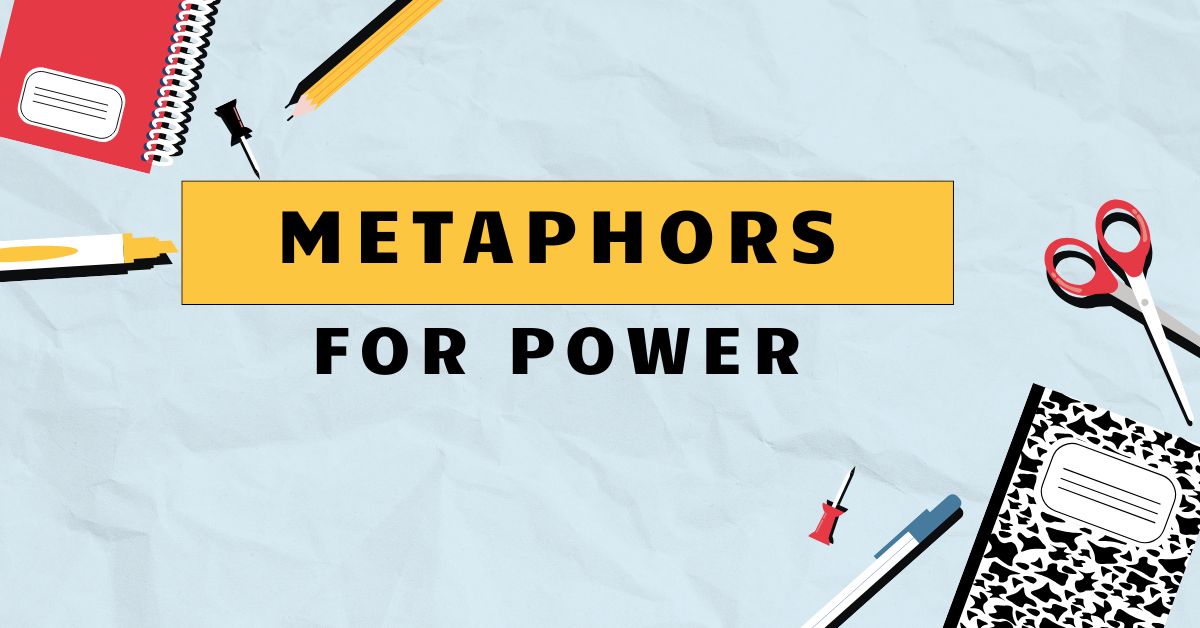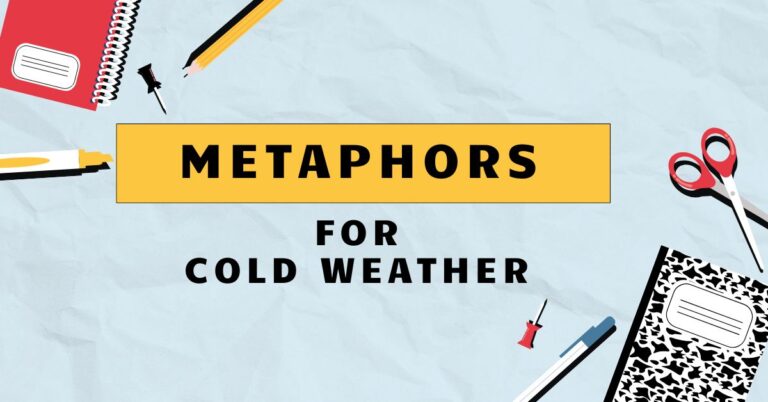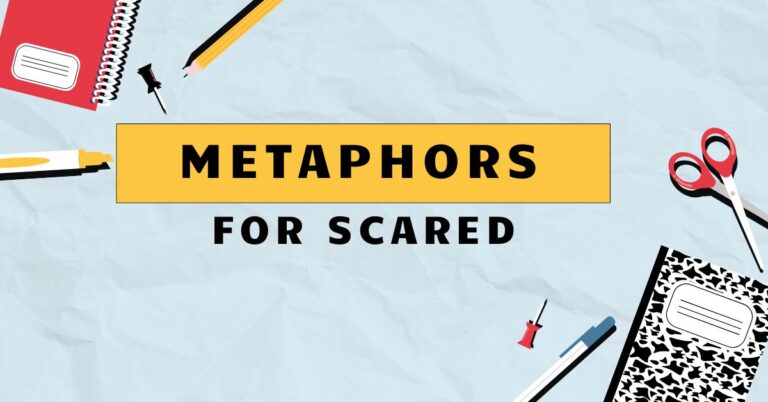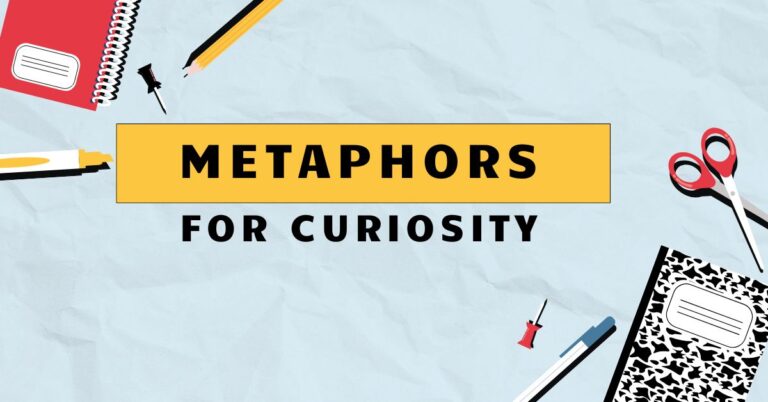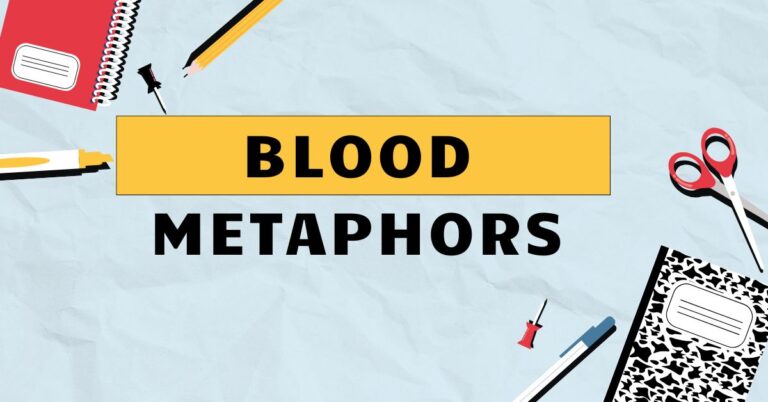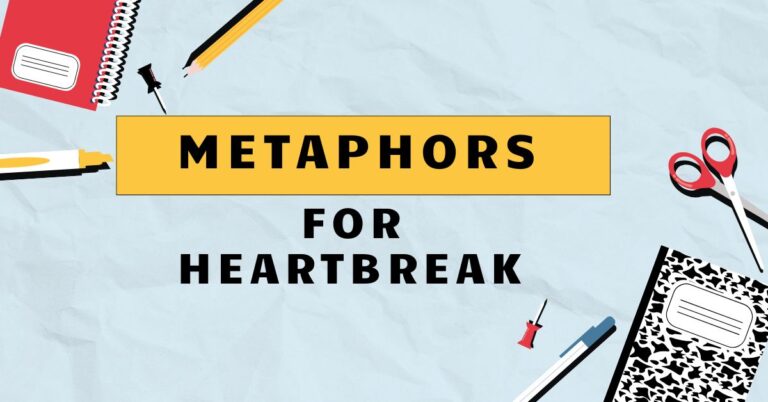33 Metaphors for Power: Understanding Figurative Language
Metaphors are powerful tools in language, allowing us to understand abstract concepts like power by comparing them to more concrete, relatable ideas. Understanding how metaphors are used to describe power enhances our comprehension of literature, rhetoric, and everyday communication.
This article explores the various types of metaphors used to represent power, their structural elements, and how to use them effectively. This guide is beneficial for students, writers, and anyone interested in improving their understanding of figurative language and its impact.
Table of Contents
- Introduction
- Definition of Metaphor for Power
- Structural Breakdown
- Types of Metaphors for Power
- Examples of Metaphors for Power
- Usage Rules
- Common Mistakes
- Practice Exercises
- Advanced Topics
- FAQ
- Conclusion
Definition of Metaphor for Power
Ametaphoris a figure of speech that directly compares two unrelated things, asserting that one thingisanother. This comparison is not literal but rather symbolic, aiming to highlight shared qualities or characteristics.
In the context of power, metaphors are used to describe the nature, extent, and impact of authority, influence, and control. These metaphors can be found in various forms of communication, including literature, political discourse, and everyday conversations.
Metaphors for power function by associating power with something tangible or easily understood. This helps make the abstract concept of power more accessible and relatable.
The effectiveness of a metaphor lies in its ability to resonate with the audience and evoke a specific emotional or intellectual response. For example, describing a powerful leader as a ‘lion’ invokes images of strength, courage, and dominance.
The context in which a metaphor is used significantly influences its interpretation. A metaphor used in a political speech might carry different connotations than the same metaphor used in a literary text.
Understanding the context is crucial for accurately interpreting the intended meaning and impact of the metaphor.
Structural Breakdown
The structure of a metaphor typically involves two key elements: thetenorand thevehicle. The tenor is the subject of the metaphor (in this case, power), and the vehicle is the object or concept used to describe the tenor.
The vehicle carries the qualities that are being attributed to the tenor.
For instance, in the metaphor “Power is a rising tide,”poweris the tenor, anda rising tideis the vehicle. The metaphor suggests that power, like a rising tide, is an irresistible force that can lift or submerge everything in its path.
The shared quality between power and a rising tide is their ability to exert influence and cause significant change.
Effective metaphors also rely on theground, which is the shared characteristic or similarity between the tenor and the vehicle. In the “rising tide” example, the ground is the capacity to influence and overwhelm.
Identifying the ground is essential for understanding the intended meaning and effect of the metaphor.
A metaphor’s structure can also be analyzed in terms of itssource domainandtarget domain. The source domain is the conceptual area from which the vehicle is drawn (e.g., nature, animals, architecture), while the target domain is the conceptual area being described (i.e., power).
The metaphor maps features from the source domain onto the target domain, providing a new perspective on the latter.
Types of Metaphors for Power
Metaphors for power can be categorized based on the source domain from which they are derived. Here are some common types:
Strength Metaphors
Strength metaphors equate power with physical strength, resilience, and force. These metaphors often involve imagery of muscles, weapons, and other symbols of physical dominance.
Examples include: “He wields power like a hammer,” “Her influence is an iron fist,” and “The company’s market share is a fortress.” These metaphors emphasize the ability to exert control and overcome opposition through sheer strength.
Height Metaphors
Height metaphors associate power with being elevated, superior, or above others. These metaphors often involve imagery of mountains, towers, and thrones.
Examples include: “He sits on a throne of power,” “She holds a commanding position in the industry,” and “Their authority towers over the competition.” These metaphors suggest that power is associated with status, prestige, and the ability to oversee and control from a higher vantage point.
Light and Dark Metaphors
Light and dark metaphors use the symbolism of light and darkness to represent power. Light often signifies knowledge, enlightenment, and goodness, while darkness represents ignorance, oppression, and evil.
Examples include: “The truth shone a light on his corruption,” “His reign cast a shadow over the land,” and “She illuminated the path to progress.” These metaphors highlight the moral and ethical dimensions of power, suggesting that power can be used for good or ill.
Animal Metaphors
Animal metaphors draw on the characteristics of animals to represent different aspects of power. Certain animals, such as lions, eagles, and wolves, are commonly associated with strength, courage, and dominance.
Examples include: “He is a lion in the boardroom,” “She is as sly as a fox in negotiations,” and “They are wolves in sheep’s clothing.” These metaphors use animal traits to convey specific qualities of power, such as ferocity, cunning, or deception.
Elemental Metaphors
Elemental metaphors use the forces of nature, such as fire, water, and wind, to represent power. These metaphors often convey the idea of power as a dynamic and uncontrollable force.
Examples include: “His anger was a raging fire,” “Her influence flowed like a river,” and “Their ideas swept through the country like a storm.” These metaphors emphasize the intensity, fluidity, and transformative potential of power.
Container Metaphors
Container metaphors use the idea of containment to represent power. Those in power are seen as being ‘in control’ or ‘holding’ power, while those without power are ‘outside’ or ‘excluded’.
Examples include: “He holds the reins of power tightly,” “She is at the helm of the organization,” and “They are trapped under his thumb.” These metaphors emphasize the control, leadership, and potential oppression associated with power.
Examples of Metaphors for Power
Here are some tables providing extensive examples of different types of metaphors for power.
This table presents examples of strength metaphors used to describe power. These metaphors often involve imagery of physical force.
| Metaphor | Explanation |
|---|---|
| His power was an iron fist. | Implies that his power is rigid, unyielding, and potentially oppressive. |
| She wielded influence like a hammer. | Suggests that her influence is direct, forceful, and impactful. |
| The company’s market share is a fortress. | Indicates that the company’s market share is strong, secure, and difficult to penetrate. |
| He crushed his opponents with his authority. | Conveys that he used his authority to overwhelm and defeat his rivals. |
| Her words carried the weight of a thousand soldiers. | Suggests that her words are powerful, authoritative, and capable of influencing many people. |
| The king’s decree was an unbreakable chain. | Implies that the king’s decree is binding, inescapable, and cannot be challenged. |
| His position was a rock in a turbulent sea. | Indicates that his position is stable, secure, and provides a sense of security. |
| She had a grip of steel on the situation. | Suggests that she is in complete control and will not relinquish her hold. |
| The law was a sword hanging over their heads. | Conveys that the law is a constant threat and source of fear. |
| His power was a shield against criticism. | Implies that his power protects him from scrutiny and negative feedback. |
| The CEO’s authority was a bulldozer, flattening any obstacles in its path. | This metaphor portrays the CEO’s authority as an overwhelming force that easily overcomes any resistance or challenge. |
| Her influence was a vise grip, squeezing the life out of the competition. | This metaphor suggests that her influence is constricting, relentless, and harmful to her competitors. |
| His control over the market was an impenetrable wall. | This metaphor illustrates his control as solid, secure, and impossible to breach. |
| The dictator’s regime was an iron cage, trapping the people in oppression. | This metaphor depicts the regime as restrictive, confining, and brutally controlling. |
| Their combined strength was a battering ram, breaking down barriers to success. | This metaphor characterizes their combined strength as a powerful force that overcomes obstacles. |
| His power was a dam, holding back the flood of dissent. | This metaphor portrays his power as a barrier that suppresses opposition and prevents it from spreading. |
| She leveraged her position like a crane, lifting her team to new heights. | This metaphor likens her position to a tool that elevates and supports her team. |
| The government’s policies were a chain, binding the economy. | This metaphor suggests that the government’s policies are restrictive and hindering economic growth. |
| His charisma was a magnet, attracting followers and supporters. | This metaphor compares his charisma to a force that draws people toward him. |
| The company’s innovation was a catapult, launching them ahead of the competition. | This metaphor portrays the company’s innovation as a force that propels them forward and creates a significant advantage. |
| Her arguments were bullets, piercing through the opposition’s defenses. | This metaphor suggests that her arguments are sharp, precise, and effective at dismantling opposing viewpoints. |
| His influence was a heavy anchor, grounding the project and preventing it from drifting. | This metaphor likens his influence to a stabilizing force that keeps the project on track. |
| The organization’s structure was a rigid skeleton, providing support but limiting flexibility. | This metaphor depicts the organization’s structure as strong but inflexible. |
| Her determination was a steel spine, keeping her upright in the face of adversity. | This metaphor portrays her determination as a source of strength that helps her withstand challenges. |
| His control over the media was a muzzle, silencing dissenting voices. | This metaphor suggests that his control is oppressive and suppresses freedom of speech. |
This table provides examples of height metaphors for power. These metaphors often use imagery of vertical elevation.
| Metaphor | Explanation |
|---|---|
| He sits on a throne of power. | Implies that he holds a high and authoritative position. |
| She holds a commanding position in the industry. | Suggests that she is in a position of leadership and influence. |
| Their authority towers over the competition. | Indicates that their authority is superior and more significant than that of their rivals. |
| He ascended to the summit of success. | Conveys that he has reached the highest point of achievement. |
| Her influence reached the highest echelons of government. | Suggests that her influence extends to the most powerful levels of government. |
| The company climbed to the top of the market. | Implies that the company has achieved a leading position in the market. |
| His status elevated him above his peers. | Indicates that his status has raised him to a position of superiority. |
| She stood head and shoulders above the other candidates. | Suggests that she is significantly better and more qualified than the other candidates. |
| Their power reached dizzying heights. | Conveys that their power is extensive and overwhelming. |
| He built an empire on a foundation of influence. | Implies that he has created a vast and powerful organization. |
| The CEO’s vision was a towering lighthouse, guiding the company through stormy seas. | This metaphor portrays the CEO’s vision as a beacon that provides direction and leadership during difficult times. |
| Her career trajectory was a steep ascent, reaching unprecedented heights. | This metaphor suggests that her career advancement was rapid and remarkable. |
| His authority was a high mountain, casting a long shadow over the region. | This metaphor illustrates his authority as imposing and influential, affecting a wide area. |
| She held a lofty position, overseeing the entire operation with strategic vision. | This metaphor depicts her position as elevated and influential, allowing her to guide the operation effectively. |
| Their achievements were a high-flying success, soaring above all expectations. | This metaphor characterizes their achievements as exceptional and exceeding expectations. |
| His influence was a towering skyscraper, dominating the city skyline. | This metaphor portrays his influence as prominent, substantial, and impossible to ignore. |
| She rose through the ranks like a rocket, propelled by ambition and talent. | This metaphor likens her rise to a rapid and unstoppable ascent. |
| Their power was a high-voltage current, electrifying the entire industry. | This metaphor suggests that their power is dynamic, stimulating, and transformative. |
| His ideas were elevated concepts, pushing the boundaries of conventional thinking. | This metaphor portrays his ideas as sophisticated, innovative, and ahead of their time. |
| She stood on the pinnacle of her career, having achieved all her goals. | This metaphor depicts her as having reached the highest point of her professional life. |
| The company’s reputation was a high-value asset, attracting top talent and investors. | This metaphor portrays the company’s reputation as a valuable and attractive quality. |
| His insights were elevated perspectives, offering a new understanding of complex issues. | This metaphor suggests that his insights are profound and provide valuable clarity. |
| The organization’s status was a high-profile presence, drawing attention from around the world. | This metaphor depicts the organization’s status as prominent and internationally recognized. |
| Her leadership was a high-impact force, driving significant change and progress. | This metaphor portrays her leadership as influential and effective at creating positive outcomes. |
| His vision was a high-definition picture, providing a clear and detailed view of the future. | This metaphor suggests that his vision is vivid, precise, and insightful. |
This table provides examples of animal metaphors for power, using animal characteristics to represent power dynamics.
| Metaphor | Explanation |
|---|---|
| He is a lion in the boardroom. | Implies that he is strong, courageous, and dominant in business meetings. |
| She is as sly as a fox in negotiations. | Suggests that she is cunning, clever, and strategic in negotiations. |
| They are wolves in sheep’s clothing. | Indicates that they appear harmless but are actually dangerous and predatory. |
| He ruled his territory like a hawk. | Conveys that he is watchful, alert, and quick to assert his control. |
| Her influence spread like a spider’s web. | Suggests that her influence is subtle, pervasive, and inescapable. |
| The politician was a snake in the grass. | Implies that the politician is deceitful, treacherous, and untrustworthy. |
| He pecked at his rivals like a chicken. | Indicates that he is aggressive and persistent in his attacks. |
| She soared above the competition like an eagle. | Suggests that she is superior, ambitious, and successful. |
| His words stung like a scorpion. | Conveys that his words are sharp, hurtful, and venomous. |
| They swarmed around the leader like bees. | Implies that they are loyal, supportive, and cooperative. |
| The CEO was a shark in the business world, always hunting for opportunities. | This metaphor portrays the CEO as aggressive, predatory, and constantly seeking advantage. |
| Her political maneuvering was as intricate as a spider’s web, trapping her opponents. | This metaphor suggests that her tactics are complex, deceptive, and ensnaring. |
| His leadership style was like that of a pack leader, guiding and protecting his team. | This metaphor likens his leadership to a guiding and protective force. |
| She ruled her department like a queen bee, with absolute authority and control. | This metaphor depicts her as a central figure with unquestioned power. |
| Their collaboration was as harmonious as a flock of birds, moving together in perfect unison. | This metaphor characterizes their collaboration as coordinated and seamless. |
| His influence was as subtle as a chameleon, adapting to different situations and environments. | This metaphor suggests that his influence is adaptable, discreet, and pervasive. |
| She pounced on opportunities like a panther, seizing them with swift precision. | This metaphor likens her to a quick and decisive opportunist. |
| Their unity was as strong as a herd of elephants, standing together against any threat. | This metaphor portrays their unity as powerful, resilient, and unwavering. |
| His personality was as charming as a butterfly, attracting attention and admiration. | This metaphor suggests that his personality is appealing, engaging, and captivating. |
| She navigated the corporate jungle like a seasoned explorer, overcoming challenges with skill and resilience. | This metaphor depicts her as adept at navigating complex and competitive environments. |
| The company’s growth was as rapid as a blooming flower, expanding quickly and beautifully. | This metaphor characterizes the company’s growth as swift, vibrant, and flourishing. |
| His strategies were as cunning as a fox, outsmarting competitors and achieving success. | This metaphor suggests that his strategies are clever, strategic, and effective. |
| Their resilience was as enduring as a tortoise, weathering storms and remaining steadfast. | This metaphor portrays their resilience as persistent, patient, and unyielding. |
| Her vision was as sharp as an eagle’s eye, spotting opportunities from afar. | This metaphor likens her vision to a keen and perceptive ability. |
| His control over the situation was as tight as a snake’s grip, preventing any escape. | This metaphor suggests that his control is constricting, inescapable, and absolute. |
Usage Rules
When using metaphors for power, it’s essential to follow certain guidelines to ensure clarity, effectiveness, and appropriateness.
- Choose relevant vehicles: The vehicle should have qualities that are genuinely relevant to the aspect of power you are trying to convey.
- Avoid mixed metaphors: Mixing metaphors can create confusion and undermine the impact of your message. Ensure that the different elements of your metaphor are consistent and coherent.
- Consider your audience: The effectiveness of a metaphor depends on the audience’s ability to understand and relate to the vehicle. Choose vehicles that are familiar and meaningful to your target audience.
- Be mindful of connotations: The vehicle you choose may carry unintended connotations that could detract from your message. Consider the potential implications of your metaphor and ensure that it aligns with your intended meaning.
- Use sparingly: Overusing metaphors can make your writing or speech sound contrived and distracting. Use metaphors judiciously to enhance your message, not to obscure it.
Example of a mixed metaphor (incorrect): “He grasped the reins of power and sailed into the sunset.” This mixes the metaphors of ‘grasping reins’ (control, leadership) with ‘sailing into the sunset’ (ending, decline), creating a confusing image.
Corrected example: “He grasped the reins of power firmly, guiding the nation through turbulent times.” This uses a consistent metaphor of control and leadership.
Common Mistakes
Several common mistakes can undermine the effectiveness of metaphors for power. Being aware of these pitfalls can help you avoid them.
| Mistake | Incorrect Example | Correct Example |
|---|---|---|
| Using clichéd metaphors | “He was a pillar of strength.” | “His resilience was like a deep-rooted oak, weathering any storm.” |
| Mixing metaphors | “She planted the seeds of change and then nipped it in the bud.” | “She planted the seeds of change with careful planning and dedicated effort.” |
| Using inappropriate vehicles | “His power was like a fluffy kitten.” | “His power was like a coiled spring, ready to unleash at any moment.” |
| Overusing metaphors | “The river of his ideas flowed into the ocean of progress, creating a tsunami of change.” | “His innovative ideas sparked significant progress.” |
| Not considering the audience | Using a technical metaphor with a non-technical audience. | Using a relatable metaphor that resonates with the audience’s experiences. |
Practice Exercises
Test your understanding of metaphors for power with these exercises.
Exercise 1: Identify the Metaphor
Identify the metaphor in each sentence and explain what aspect of power it conveys.
| Question | Answer |
|---|---|
| 1. His authority was an iron wall. | Metaphor: “iron wall.” Conveys the idea of impenetrable, unyielding power. |
| 2. She navigated the political landscape like a seasoned captain. | Metaphor: “seasoned captain.” Conveys the idea of experienced, skillful leadership. |
| 3. The CEO’s vision illuminated the company’s path forward. | Metaphor: “illuminated.” Conveys the idea of clarity, guidance, and enlightenment. |
| 4. His influence was a rising tide, lifting all boats. | Metaphor: “rising tide.” Conveys the idea of widespread, beneficial impact. |
| 5. The dictator’s regime was a cage, trapping the people. | Metaphor: “cage.” Conveys the idea of confinement, oppression, and lack of freedom. |
| 6. Her arguments were sharp knives, cutting through the opposition’s claims. | Metaphor: “sharp knives.” Conveys the idea of precision, effectiveness, and incisiveness. |
| 7. His control over the media was a muzzle on free speech. | Metaphor: “muzzle.” Conveys the idea of suppression, censorship, and restriction. |
| 8. The company’s innovation was a rocket, launching them ahead of competitors. | Metaphor: “rocket.” Conveys the idea of rapid advancement, acceleration, and superiority. |
| 9. Her determination was a steel spine, keeping her upright in difficult times. | Metaphor: “steel spine.” Conveys the idea of strength, resilience, and unwavering resolve. |
| 10. His charisma was a magnet, attracting followers and supporters. | Metaphor: “magnet.” Conveys the idea of attraction, influence, and popularity. |
Exercise 2: Create Metaphors
Create a metaphor for power based on the given prompts.
| Prompt | Possible Answer |
|---|---|
| 1. Describe the power of knowledge. | Knowledge is a lighthouse, guiding us through the darkness of ignorance. |
| 2. Describe the power of unity. | Unity is a fortress, standing strong against any division. |
| 3. Describe the power of innovation. | Innovation is a catalyst, accelerating progress and transformation. |
| 4. Describe the power of resilience. | Resilience is a phoenix, rising from the ashes of adversity. |
| 5. Describe the power of influence. | Influence is a ripple effect, spreading change far and wide. |
| 6. Describe the power of truth. | Truth is a mirror, reflecting reality and exposing falsehood. |
| 7. Describe the power of compassion. | Compassion is a bridge, connecting hearts and minds. |
| 8. Describe the power of creativity. | Creativity is a spark, igniting imagination and innovation. |
| 9. Describe the power of perseverance. | Perseverance is a marathon, requiring endurance and unwavering focus. |
| 10. Describe the power of leadership. | Leadership is a compass, providing direction and guidance. |
Advanced Topics
For advanced learners, consider exploring the following topics:
- Conceptual Metaphor Theory: This theory, developed by George Lakoff and Mark Johnson, explores how metaphors shape our understanding of abstract concepts.
- Metaphor and Ideology: Investigate how metaphors are used to reinforce or challenge dominant ideologies in political discourse and social commentary.
- Cross-Cultural Metaphors: Examine how metaphors for power vary across different cultures and languages.
- The Role of Metaphor in Persuasion: Analyze how metaphors can be used to persuade and influence audiences in speeches, advertisements, and other forms of communication.
Delving into these advanced topics will provide a deeper understanding of the complex relationship between metaphor, power, and human cognition.
FAQ
Here are some frequently asked questions about metaphors for power.
- What is the difference between a metaphor and a simile?
A metaphor directly equates two things (e.g., “His power was a fortress”), while a simile compares two things using “like” or “as” (e.g., “His power was like a fortress”). Similes are more explicit in their comparison, while metaphors are more implicit.
- Why are metaphors for power so common in political discourse?
Metaphors are used in political discourse to simplify complex ideas, evoke emotions, and persuade audiences. They can make abstract concepts like power more relatable and understandable, influencing public opinion and shaping political narratives.
- How can I identify a metaphor for power in a text?
Look for statements that equate power with something else, even though the comparison is not literally true. Pay attention to the context and consider the qualities that the vehicle brings to the understanding of power.
- What are the ethical considerations when using metaphors for power?
It’s important to be mindful of the potential impact of your metaphors. Avoid using metaphors that perpetuate harmful stereotypes or promote oppressive ideologies. Choose vehicles that are respectful, inclusive, and promote a positive understanding of power.
- Can a metaphor for power be misinterpreted?
Yes, metaphors can be misinterpreted if the audience is unfamiliar with the vehicle or if the context is ambiguous. To minimize misinterpretation, choose vehicles that are widely understood and provide sufficient context to clarify your intended meaning.
- How do cultural differences affect the interpretation of metaphors for power?
Different cultures may have different associations with certain vehicles. A metaphor that is effective in one culture may be confusing or offensive in another. Be sensitive to cultural differences and adapt your metaphors accordingly.
- What is the role of context in understanding metaphors for power?
Context is crucial for understanding the intended meaning and impact of a metaphor. The same metaphor can have different connotations depending on the situation, the speaker, and the audience. Consider the broader context to accurately interpret the metaphor.
- How can I improve my ability to use metaphors for power effectively?
Read widely, pay attention to how others use metaphors, and practice creating your own metaphors. Experiment with different vehicles and consider their potential impact on your audience. Seek feedback from others to refine your skills.
- Are there any metaphors for power that should be avoided?
Avoid metaphors that promote violence, oppression, or discrimination. Also, be cautious of using clichéd metaphors that have lost their impact. Strive to create original and meaningful metaphors that resonate with your audience.
- How can metaphors for power be used in everyday conversation?
Metaphors can be used to add color, depth, and nuance to your everyday conversations. Use them to express your ideas more vividly and to connect with others on an emotional level. Be mindful of your audience and choose metaphors that are appropriate for the situation.
Conclusion
Metaphors for power are integral to understanding how we perceive and communicate about authority, influence, and control. By grasping the structural elements, recognizing the different types, and adhering to usage rules, you can effectively employ metaphors to enhance your communication skills.
Avoid common mistakes, practice creating your own metaphors, and explore advanced topics to deepen your understanding. Ultimately, mastering metaphors for power will enrich your ability to express complex ideas and engage with the world around you.
Remember to consider the context, your audience, and the potential connotations of your metaphors. Use them judiciously and ethically to convey your message with clarity, impact, and sensitivity.
With practice and attention to detail, you can harness the power of metaphors to become a more effective communicator and critical thinker.

